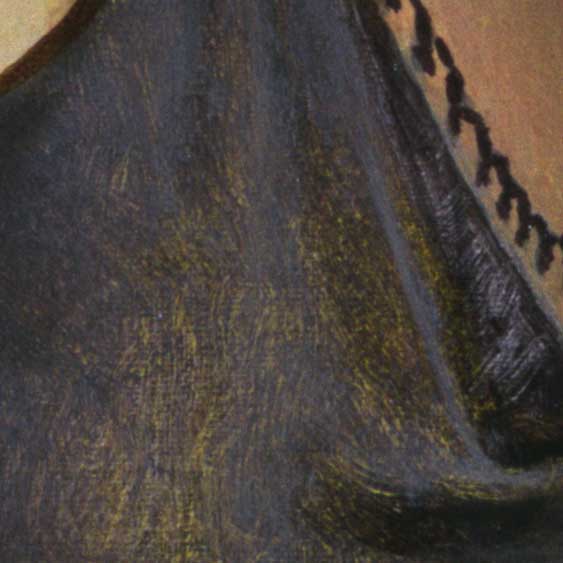colors. Alzofon compares the process to layering gauze. As she applies additional
layers, the colors become more opaque, and there is a greater saturation of tints that
gives the hues a more luminous appearance. This technique also produces a subtle
interplay of colors filtering up from layers below--a look, the artist says, that could
never be created with one swipe of color.
I decided to show you the most obvious use of the above mentioned method. This young lady wore a blouse which was made in two layers of fabric: solid yellow and sheer black. I painted the lower yellow layer first. When that was dry, I painted the shear black layer, and while still wet, I scratched back to reveal the yellow and shape the folds (hog bristle brushes scratch nicely). When the black layer dried, I applied a scumble of a blue-white tint to represent the lit side of the folds in the shear black fabric. This method is used all over this painting, as well as many others, but because the colors in most passages are often similar, I doubt you would see the distinct layers in a computer image. However, check this detail from the Child's Portrait, and see if you can identify the separate gauzy layers from bottom to top in the rendering of skin.
